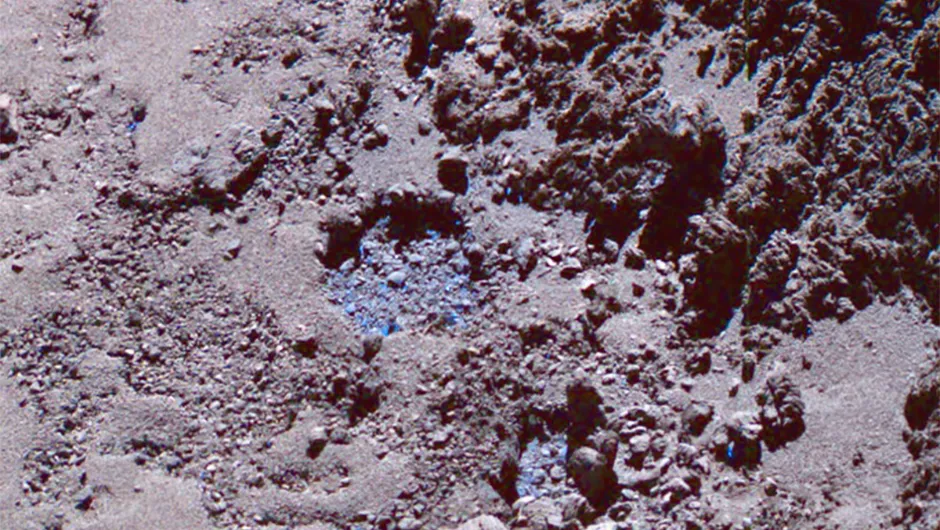A new study has analysed data captured by the Rosetta spacecraft of a dusty outburst from the surface of Comet 67P.ESA's Rosetta mission to study Comet 67P/Churyumov-Gerasimenko ended on 30 September 2016, in a controlled manoeuvre that saw the spacecraft purposely crash into the comet.
But scientists are still analysing all the data collected by Rosetta during its two-year study.
Scientists from the Max Planck Institute for Solar System Research (MPS) in Germany have found that a jet of dust that was emitted by 67P was not solely driven by the melting of ice, but that other active processes must be at work.
Studies like these can help scientists ultimately fulfill the Rosetta mission: to learn more about comets, their inner workings, and their role in the Universe.
On 3 July 2016, the Sun began to shine on the Imhotep region of the comet, warming its icy surface and causing dust to be emitted into space.
Coincidentally, Rosetta’s OSIRIS camera was focussed on the exact region of the comet from which the dusty plume was emitted.
"This was an amazing stroke of luck. It is impossible to plan something like this”, says Dr. Jessica Agarwal of MPS, head of the study.
Rosetta was equipped with instruments that could capture and measure dust particles from the jet, enabling scientists to find out the velocities, sizes and average densities of the particles.
Rosetta’s spectrograph also tracked the increase in brightness caused by the outburst and detected tiny ice particles in the dusty cloud.
While scientists theorise that comets’ jets are caused by sublimation - the process of a frozen gas like water immediately being converted into liquid via heat from the Sun - this new study suggests that sublimation alone cannot explain the 3 July outburst.
The dust production was measured at about 18 kilograms per second, which is a lot dustier than predicted.
"An additional energetic process must be at play – energy must have been released from beneath the surface to support the plume”, says Agarwal.

Perhaps there are cavities filled with compressed gas below the surface of the comet, which are released when radiation begins to warm the comet, causing cracks to develop and allowing the gas to escape.
Or another theory suggests it is related to amorphous ice beneath the comet’s surface.
This type of frozen water has molecules aligned not in a lattice-like structure, as is the case with crystalline ice, but in a more disorderly manner.
Crystalline ice is a state that is energetically more favourable, so energy is released as the ice changes from amorphous to crystalline. Such a change could be caused by energy from sunlight.
"There’s a particular focus now within the Rosetta science community on looking to combine data from 67P with modelling, simulations, and laboratory work here on Earth, to address the question of what drives such activity on comets”, says Dr. Matt Taylor, Rosetta Project Scientist at ESA.
